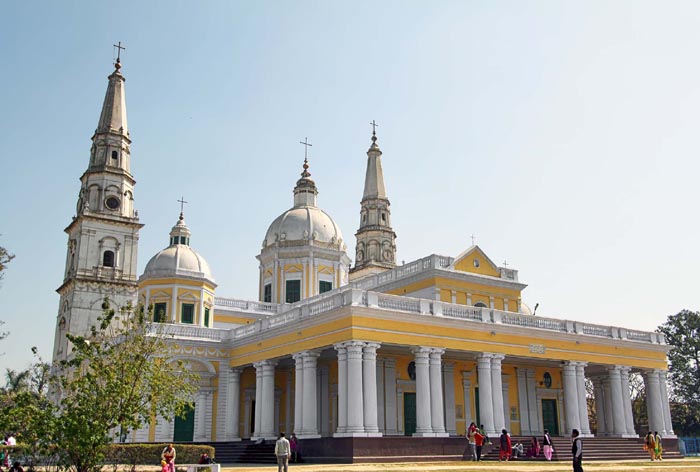Begum Samru Church

Information on Begum Samru Church, Meerut, Uttar Pradesh
Situated in Meerut district of Uttar Pradesh, Sardhana Cemetery or Begum Samru Church is a historical monument of national importance. It is basically a catholic cemetery, with a church dwarfing around the building. At present, Sardhana Cemetery is maintained by Archaeological Department of India. Within the holy ground of the cemetery, there are lies big monuments which are related with Begum Samru, the princess who buried under the ground of the churchyard.
Begum Samru Church Architecture
Sardhana Cemetery is a great example of Muslim architecture. In the centre of the cemetery is the family dome which include the decedents of princess Begum. It is the most attractive site of Sardhana Cemetery, where lies the graveyards of Julia Anne, the grand daughter of Begum and the adopted son of Begum. In the vault, there also lies some of Begum's children who passed away at young age. The dome has been attractively designed and it possesses faded touches of silver coloured paint which was used in order to cover the portions of the monument. The design along with the painting is still visible.
The first dome that can be observed after entering Sardhana Cemetery is the grave of Le Vaisseau, the French husband of Begum. There is also a faint inscription which worn along with the time. In the right side of the pathway inside Sardhana Cemetery, there is a number of pyramid shaped catacomb stones. These catacombs belonged to the dynasty of Reghelini, the architect of the mausoleum along with several inner monuments of Sardhana Cemetery. The caption in the catacomb depicts that he was thrown off from a horse. Closely to the catacombs of Reghelini, there rests the tomb of Colonel Jean Remy. He was the major that remained faithful to princess Begum, throughout the revolt of her troops in the year 1795.
There is a church inside Sardhana Cemetery where catholic worship are done. The church was constructed in such a way so that priests and other people can pray by facing east side. At the end of the church, there is an old palace dedicated to princess Begum. It was created in Muslim architectural style with inspiring galleries. There have been many additions and modifications in the palace over many years. The special feature of the palace is underground rooms where Begum used to go during summer times for escaping from excessive heat.
Begum Samru Church Architecture
Sardhana Cemetery has few equals in the nation. It was the work of famous Italian sculptor. The memorial was specially made by David Sumru and the construction was finished in the year 1842. The church inside the memorial was dated back to the year 1834. The construction of the church was under the authority of an Italian architect named Anthony Reghelini.
When Begum created the cemetery she wished to give tribute to Mary, the mother of Jesus, by bestowing the church. However, she never fantasised that the church would give tribute to Mary in a manner it does at present. Nowadays the church is the centre of Marian religious fervour. There is also an old palace whose time of construction is not certain. Historical records states that Walter Reinhardt created this palace when he selected Sardhana as the capital of Jagir.
Begum Samru Church Tourism Importance
Sardhana Cemetery is a worthy place to visit because several historical figures were buried in this place. This place has vital historical significance and travellers can enjoy the ancient memorials of people during the Mughal and British age. Sardhana Cemetery provides an insight regarding the foreigners that served princess Begum and it stands as an example Muslim architecture. Sardhana Cemetery has lovely view with various attractive structures inside it which makes it highly important from tourism view point.
- Andaman Nicobar Monuments
- Andhra Pradesh Monuments
- Assam Monuments
- Bihar Monuments
- Chhattisgarh Monuments
- New Delhi Monuments
- Goa Monuments
- Gujarat Monuments
- Haryana Monuments
- Himachal Pradesh Monuments
- Jammu and Kashmir Monuments
- Karnataka Monuments
- Kerala Monuments
- Madhya Pradesh Monuments
- Maharashtra Monuments
- Odisha Monuments
- Punjab Monuments
- Rajasthan Monuments
- Tamil Nadu Monuments
- Telangana Monuments
- Uttar Pradesh Monuments
- West Bengal Monuments